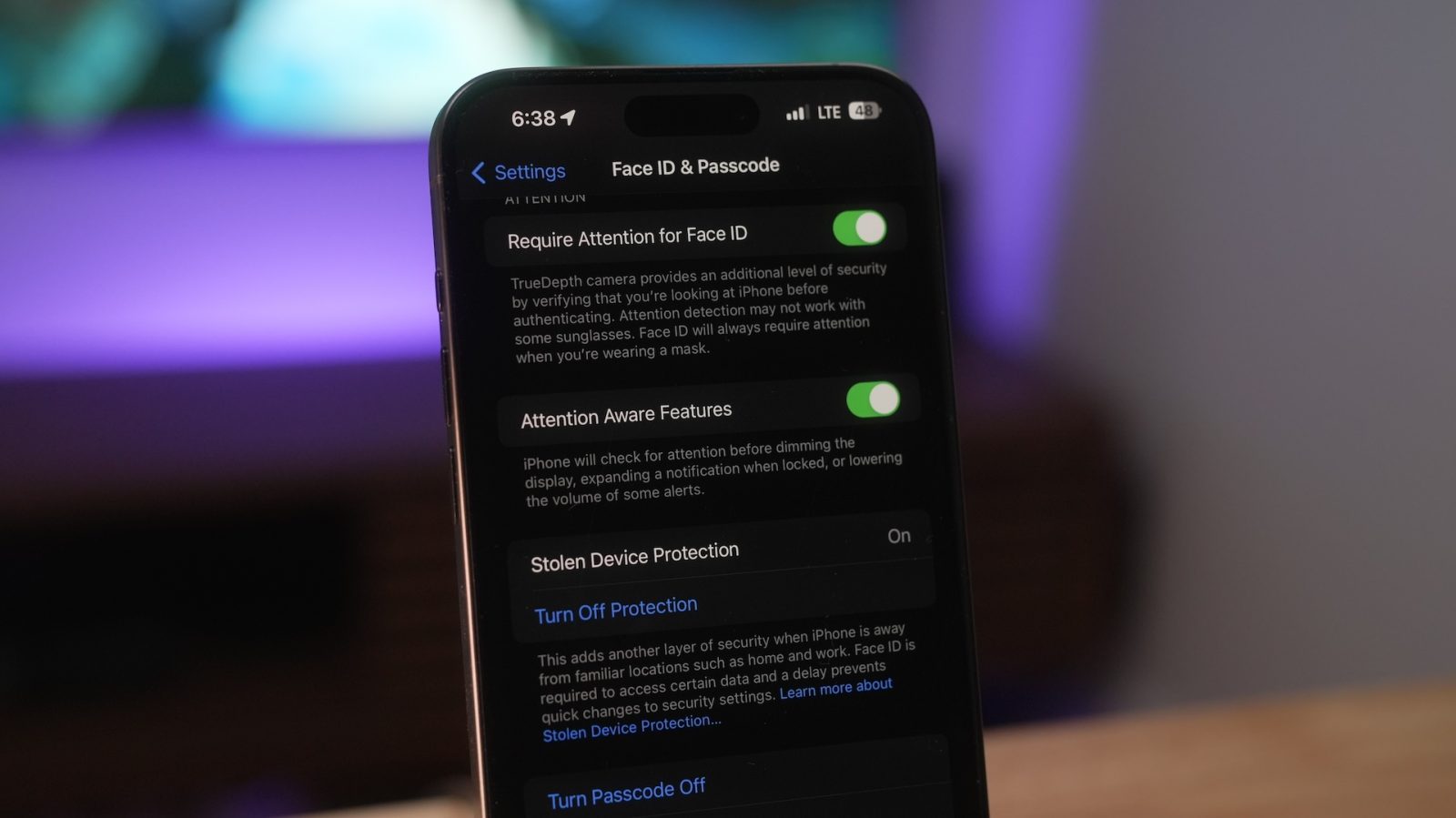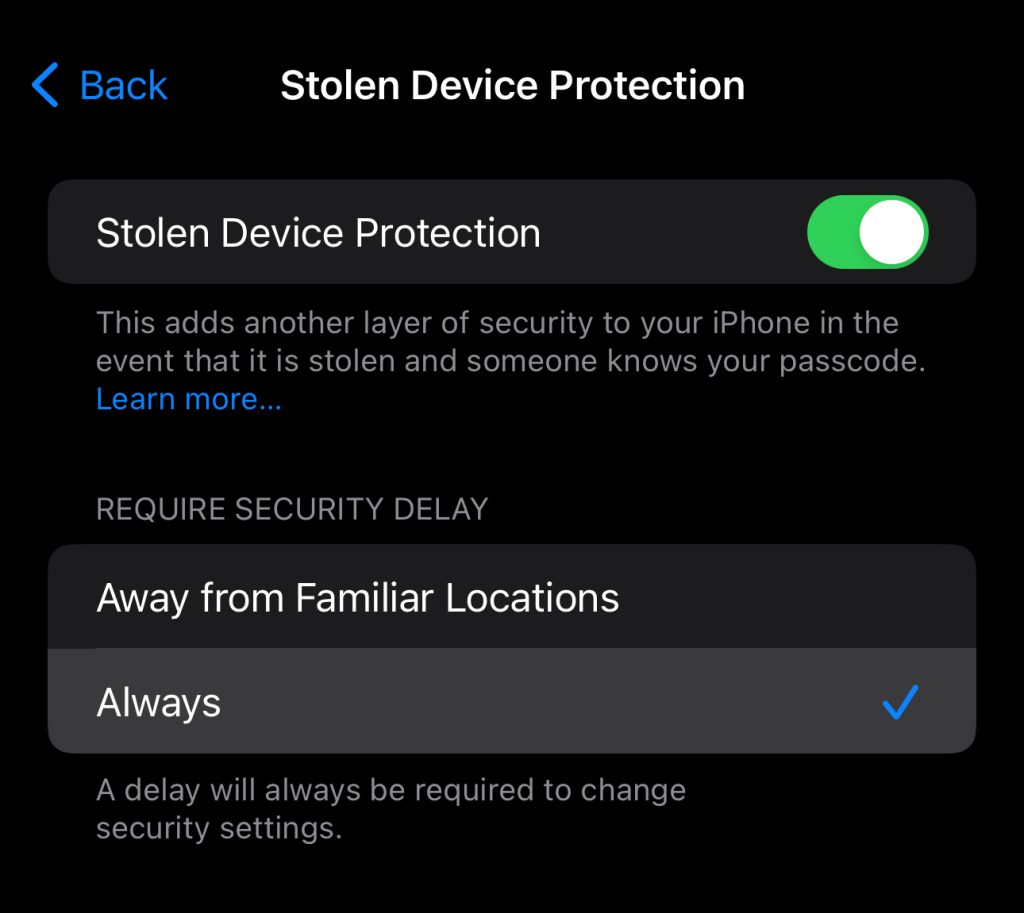
The initial iOS 17.4 beta was released to developers today, and the big news surrounding the update involves all of the changes to comply with the European Union’s Digital Markets Act. However, iOS 17.4 also includes an update to Stolen Device Protection, a feature first appearing in iOS 17.3. Now, users can choose to always require a security delay when changing security settings.
We walked through all of the changes and features in iOS 17.3, including an in-depth look at Stolen Device Protection. If you haven’t already, you’ll want to watch our breakdown of Stolen Device Protection as we explore the nuances of the security feature.
Video walkthrough: Stolen Device Protection
Subscribe to 9to5Mac on YouTube for more
In a nutshell, Stolen Device Protection aims to thwart thieves who have stolen your iPhone and who also know your passcode. The feature adds layers of security in two key ways. First, it forces biometric authentication when attempting to change security settings like Apple ID password or device passcode. Secondly, when away from familiar locations like home or work, it will institute a one-hour delay to help further stymie attempts to access sensitive security settings.

In iOS 17.4, users now have the option to always require a security delay instead of only enacting the delay when away from familiar locations. This puts more control into the hands of end users and is a welcome change.
The update also changes some of the Stolen Device Protection UI, as it now features its own dedicated page with a toggle switch inside Settings → Face ID & Passcode.
FTC: We use income earning auto affiliate links. More.








Comments